Are you seeking tips for a winter adventure in Yellowstone during the peak months of December, January, and February? Look no further.
While the park might see snowfall any month of the year, and winter can hint at its arrival as early as October, the true essence of a Yellowstone winter travel season doesn't begin until mid-December.
This snow-covered wonder offers an unparalleled experience, with its vast landscapes transformed into a serene white paradise, steamy geysers contrasting the cold, and wildlife leaving tracks on pristine snow.
Venturing into this wintry world requires preparation, but with the proper guidance, you can fully immerse in Yellowstone's icy charm.
So, before you lace up your boots for this chilly journey, here are 10 essential recommendations to make your trip unforgettable.
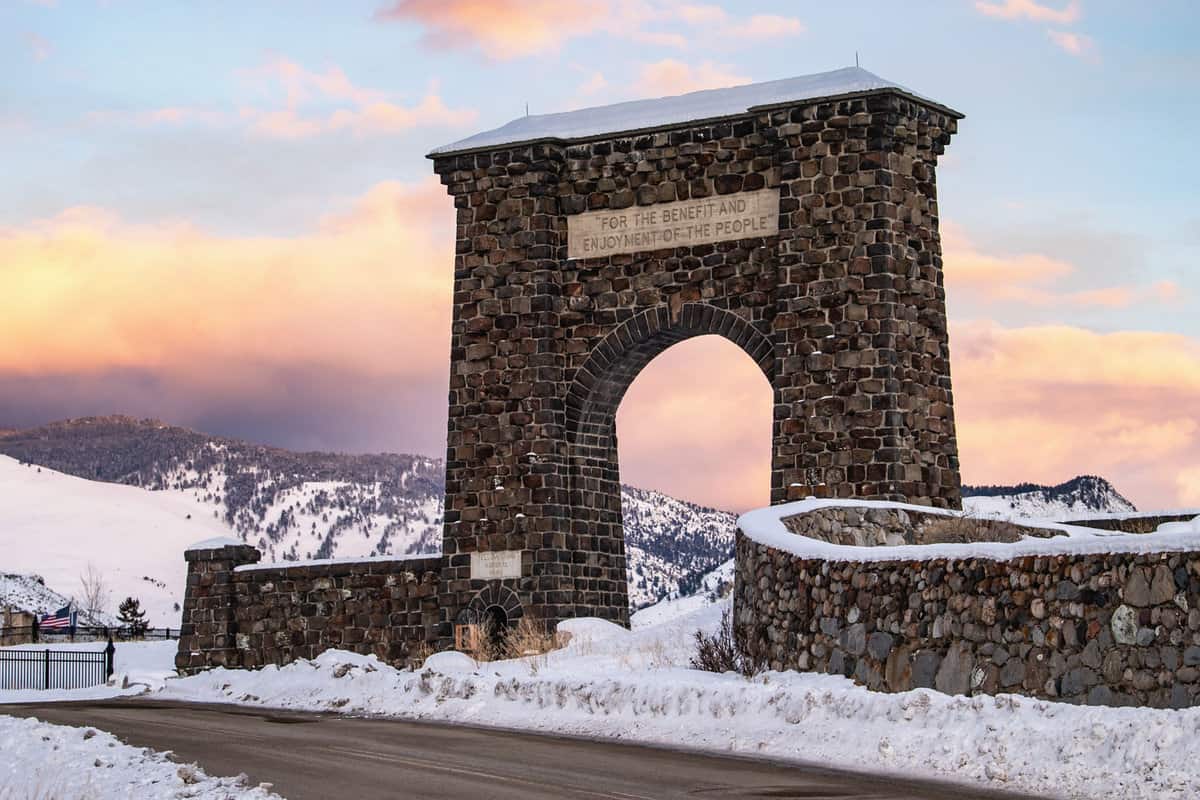
Tip #1: Understand Winter Access Points
Yellowstone's vastness is accentuated by its multiple entrances, but winter narrows these options.
The North Entrance at Gardiner, Montana, is only open for regular vehicles during the colder months. Over-snow vehicles like snowmobiles or snow coaches become essential to access other parts of the park.
Plan your route to avoid unexpected detours. Familiarizing yourself with entrance locations and vehicle requirements can make your journey smoother.
Tip #2: Monitor the Weather
Yellowstone's winter weather is as unpredictable as it is enchanting. Regularly updating yourself with the latest forecasts can be the difference between a delightful day out and getting caught in a storm.
Sudden weather shifts are common, so it's crucial to stay informed. Preparing for these changes ensures safety and lets you make the most of your visit.
For historical data on Yellowstone's winter weather patterns, visit the park's website, which provides average temperatures, snowfall totals, and record extremes. This data helps you know what to expect during your trip timing reasonably.
Tip #3: Dress for the Cold
In the chilling embrace of Yellowstone's winter, dressing appropriately is non-negotiable. Start with moisture-wicking base layers to keep dry, add insulating middle layers like fleece or down for warmth, and top with waterproof outer shells and pants.
Equip yourself with essentials like hats, gloves, and sturdy, waterproof boots. Proper attire not only ensures comfort but also prevents cold-related ailments.
Tip #4: Get the Right Snow Gear
The park's snowy trails beckon for exploration. Renting snowshoes or cross-country skis can transform your experience, offering a unique perspective of Yellowstone's winter beauty.
Some trails are groomed specifically for these activities, ensuring a more enjoyable trek. Acquainting yourself with the right equipment lets you delve deeper into the park's winter wonders.
Tip #5: Consider Guided Tours
Yellowstone's vastness can sometimes be overwhelming.
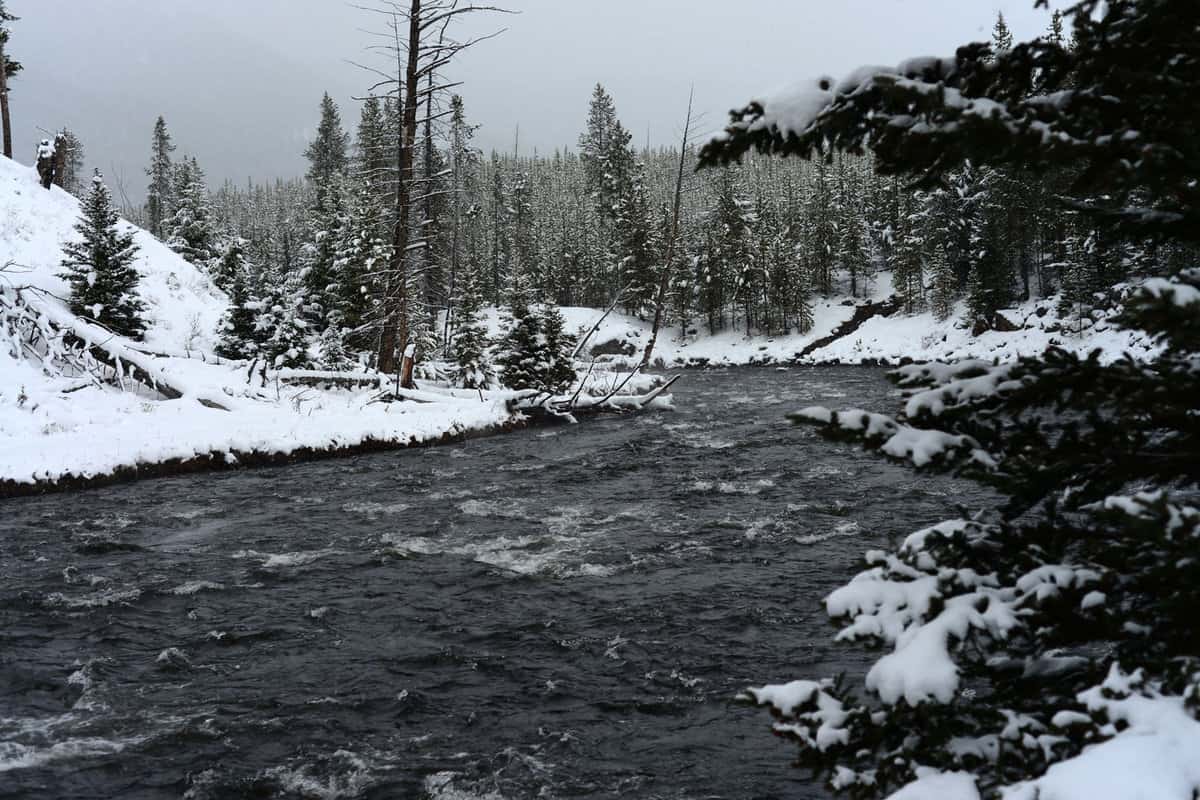
Opting for a guided snowmobile or snow coach tour can provide a comprehensive view of the park's highlights. Experienced guides offer rich insights, stories, and facts that you might otherwise miss.
These tours are designed to optimize your experience, making them a worthy consideration for first-time winter visitors.
Tip #6: Explore Geothermal Features
Yellowstone's geothermal features steal the show against the picturesque winter backdrop. Don't miss out on these natural spectacles during the peak months of January and February:
The world's most famous geyser, Old Faithful, erupts every 90 minutes, shooting towering columns of steam over 150 feet high.
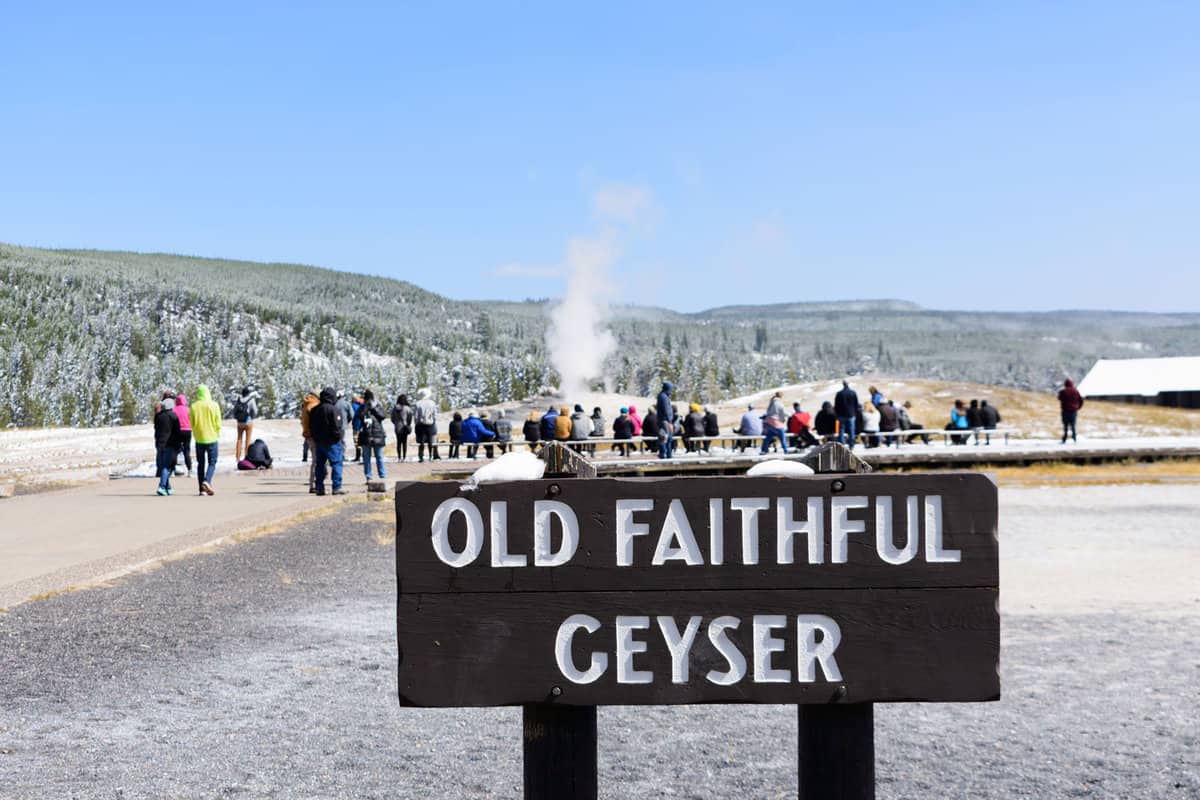
Bundle up and wait patiently by the snowy boardwalks for Old Faithful to put on a show.
At Grand Prismatic Spring, the park's largest hot spring, a rainbow of colorful bacteria rings up to 150 feet across. Its beautiful azure center, surrounded by orange, yellow and green, is especially striking when contrasted with white snow.
Take time to experience the wonder of Yellowstone's geothermal world, amplified in beauty against the stark winter backdrop. Photographers - your cameras will thank you!
Tip #7: Prepare for Limited Services
Winter brings dramatic reductions in park facilities and operating hours. Being self-sufficient is key.
Lodging & Dining
Only Mammoth Hot Springs and Old Faithful Snow Lodge cabins remain open December through March, offering dining rooms with limited hours. No other restaurants or dining options are available in the park.
Gas Stations
Only the gas station at Mammoth Hot Springs and Old Faithful station operate year-round with limited evening/early season availability. Fill up before entering the park.
Stores
The Old Faithful and Mammoth General Stores are the sole open shops with basic supplies. All other visitor center stores are closed for the season.
Visitor Centers
Only the Old Faithful and Mammoth visitor centers maintain winter hours of 9 a.m.-5 p.m. All other centers are shuttered. Interactivity is reduced.
Come prepared with your snacks, food, warm layers, snow gear and emergency supplies. Consider grocery stops in West Yellowstone and Gardiner before long days in the park.
Download the Yellowstone app for updates on closures or check websites before your visit for the current status of services during your trip. Forethought avoids disappointment in a park operating at half-capacity in winter.
Tip #8: Watch Wildlife Responsibly
Yellowstone's winter landscape is a theater of nature, with bison, elk, and wolves taking center stage. These creatures are more visible against the snowy expanses, making winter an excellent time for wildlife enthusiasts.
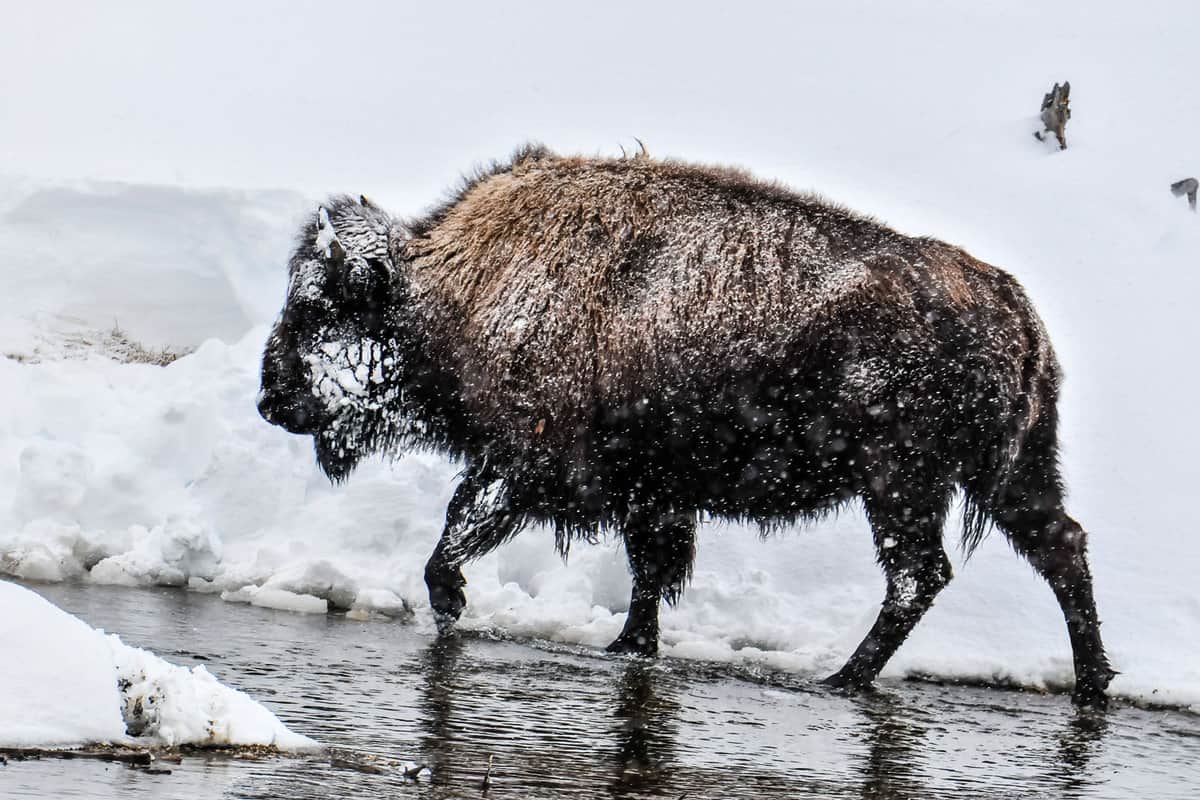
However, always prioritize safety by maintaining a minimum 100 yards distance from bears and wolves and 25 yards from all other animals. Never approach, feed, or distract wildlife.
Respecting their space ensures both your safety and theirs.
Tip #9: Prioritize Road Safety
Yellowstone's roads in winter can be deceptive. Ensuring your vehicle is winter-ready and equipped with good tires, chains, and antifreeze is paramount.
Before entering the park, check on road conditions and closures at the gate. Stay vigilant for ice patches and navigate at safe speeds below posted limits. Remember, the park's beauty is best enjoyed without worrying about road troubles.
Tip #10: Keep Emergency Information Handy
In the vastness of Yellowstone, cell service can be a luxury. Knowing the whereabouts of the nearest ranger stations and having a list of emergency contacts is crucial.
Preparing for the unexpected ensures a safer experience, allowing you to focus on the park's breathtaking beauty without unnecessary concerns.
Bonus Tip: Explore Beyond the Vehicle with Winter Activities
While snow coach and snowmobile tours give you scenic views of Yellowstone in winter, don't miss the opportunity to experience the park's trails firsthand with outdoor winter sports.
Cross-Country Skiing
With over 100km of groomed trails suitable for classic and skate styles, cross-country skiing is a fantastic way to experience Yellowstone's winter wonderland actively. Some of the best trails include:
- Lone Star Geyser Trail - A 4km loop passing several hot springs.
- Beaver Ponds Loop - A 5km trail through lodgepole pine forest.
- Canyon Village trails - Multiple trail options near Madison Junction.
Rent skis from outfitters in Mammoth or West Yellowstone before hitting the trails.
Snowshoeing
Snowshoeing allows you to explore further off-developed trails than skiing.
Trails like the Blacktail Deer Plateau and Lone Star Geyser are excellent for snowshoeing and spotting wildlife against the snow—rent snowshoes from Canyon Village.
Ice Fishing
Fishing is allowed on many of Yellowstone's frozen lakes and rivers from December through March. Ice fishing huts are often seen on Lewis Lake and during the season. Bring your gear or check for local winter rentals.
Embrace the slower pace of outdoor winter sports to experience Yellowstone's magic away from vehicle crowds intimately. With safe preparation, the trails are yours to discover.
Summing Up Essential Winter Tips for Yellowstone
As the pristine snow blankets Yellowstone's vast landscapes, transforming it into a wintry paradise, being well-prepared is key to fully appreciating its beauty and wonders.
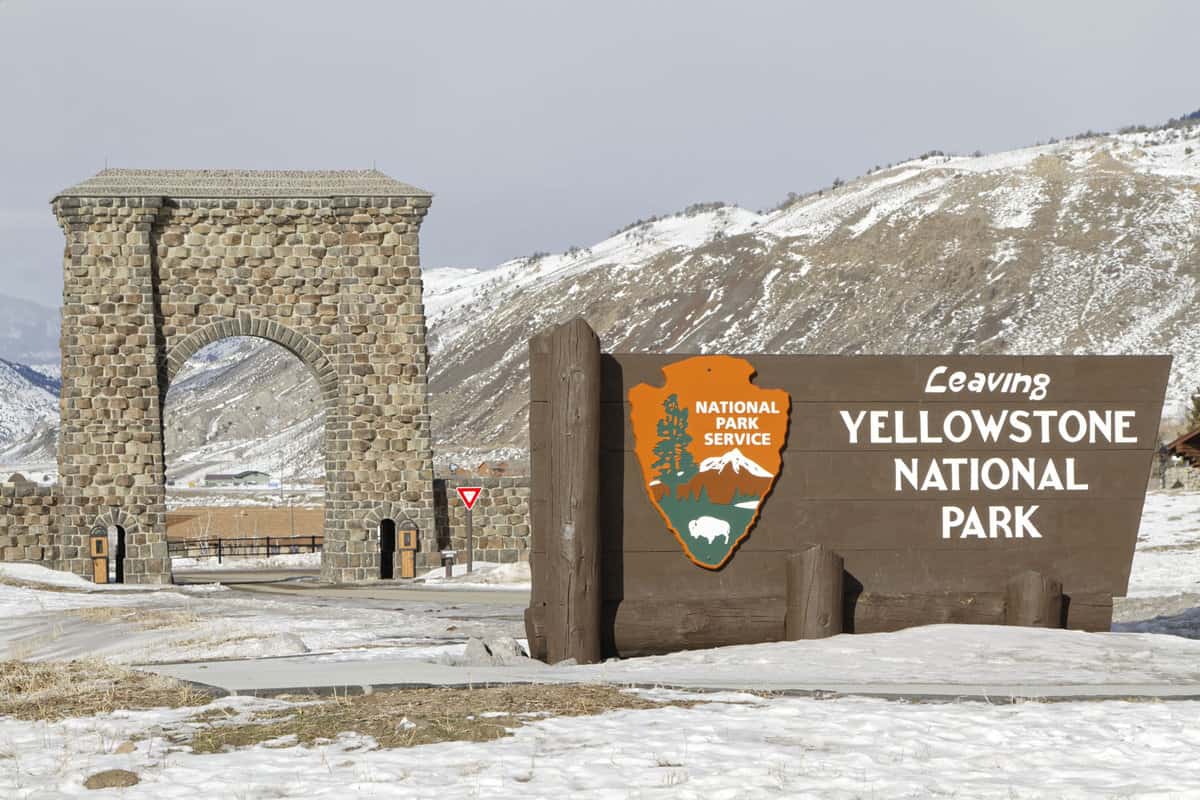
With these tips in hand, you're ensuring a safe visit and optimizing every moment of your winter adventure.
From dressing appropriately to understanding the park's unique winter dynamics, each guideline enhances your experience. Yellowstone in winter is truly a spectacle, blending nature's raw beauty and tranquil serenity.
Equip yourself with knowledge, and you're set for an unforgettable journey through one of America's most iconic national parks.
Continue your Yellowstone journey with these captivating reads:
Top 10 Things to Do in Yellowstone National Park (With Photos)
19 Pics that will make you want to visit Yellowstone West Thumb Basin
